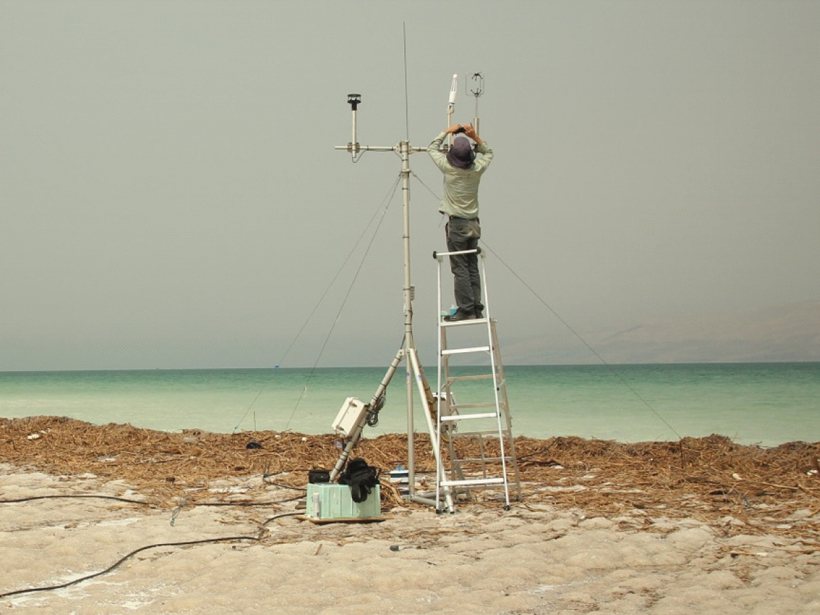Wetland conditions during the last interglacial period in parts of the Levant helped propel our ancestors into Arabia, new research suggests.
Jordan
Posted inNews
Ancient Flint Tools Reveal Earth’s Changing Magnetic Field
Stone tools may provide data on paleomagnetism that are out of reach for other markers, such as prehistoric pottery.
Posted inNews
Subsurface Imaging Sheds Light on Dead Sea Sinkholes
Using seismic waves, researchers study sediment layering near the Dead Sea to reveal how the area’s numerous sinkholes form.
Posted inResearch Spotlights
What Causes Flash Floods in the Middle East?
Researchers zero in on the large-scale meteorological processes driving extreme precipitation events in the hot, arid desert region.
Posted inResearch Spotlights
Dead Sea Provides Unique Insights on Water Evaporation
Scientists study the impacts of sunlight and wind on evaporation at one of Earth’s most unusual lakes.





